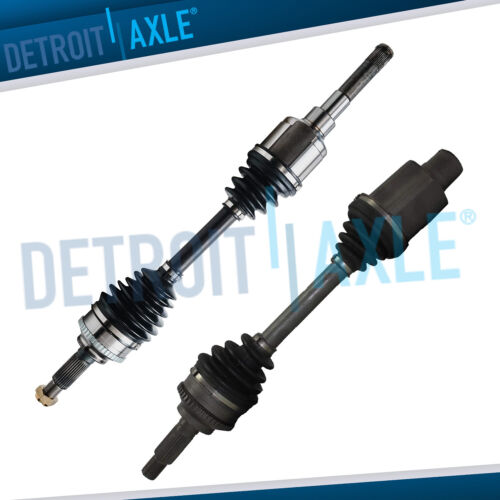
How to check CV boots on your car
Content
CV boots cover each axial joint and provide lubrication. Signs of a bad CV boot include a clicking sound and leaking lubricant.
Many times you didn't know your constant speed (CV) boots were out of whack until it was too late. You'll know it's too late when you hear the infamous clicking sound while driving and turning the steering wheel. This clicking sound indicates that the pivot on the axle has failed and that the axle axle needs to be replaced as an assembly. Knowing some of the signs of a bad constant speed boot can help you identify when the boot has failed, which may allow you to replace it or replace it before the axle joint fails.
Part 1 of 3: What is the purpose of loading at a constant rate (CV)
The constant speed boot, or CV, is a cap that covers each joint located on the constant speed axis. A constant speed axle is typically used on front wheel drive vehicles but can also be used on rear wheel drive and rear wheel drive vehicles. The axle itself is used to transfer power from the transmission or differential to the drive wheels.
The axle has a pivot at each end, allowing the axle to flex and move with the suspension and steering components. It is called a constant velocity joint because the design allows the joint to flex through the use of bearings while maintaining a constant speed.
The purpose of the boot itself is to cover the joint. The boot is used to hold a special lubricant within the joint itself to keep it lubricated. It also prevents dirt and other contaminants from entering the joint. If the boot fails, the lubricant can leave the joint, causing it to run dry, eventually leading to failure of the bearings inside the constant velocity joint. In this case, the axle assembly will need to be replaced.
Part 2 of 3: Do an Initial Inspection
Before lifting the car off the ground, a couple of checks can be made to try and diagnose a faulty constant speed boot.
Step 1: Check for grease on the wheel.. If you look at your wheels, if they have any kind of grease on them, then it indicates a CV boot failure.
When the outer boot fails, grease will leak out of the joint, and while the axle is spinning, grease will usually get onto the wheel.
Step 2: Check for grease on the fender.. Due to the design of some vehicles, CV joint grease cannot get onto the wheel itself.
Many times he was thrown on the fender liner. Inspect the wing wells for signs of grease, which may indicate possible damage to the CV boot.
Part 3 of 3: Inspect your vehicle
Your initial inspection may or may not reveal any indication of constant speed boot failure. If nothing is found, then further inspection of the boots is necessary. At this point, you will need to inspect them from under the car.
Necessary materials
- flashlight
- Hydraulic floor jack
- Jack stands
- Wheel chocks
Step 1: park your car. Park your vehicle on a level, firm surface and apply the parking brake.
Step 2: Block the tires. Place wheel chocks around the rear wheels.
Step 3: Jack up the car. Working from one side, place a floor jack under the front jack points and raise the vehicle high enough so that you can easily get under it.
Step 4: Jack up the car. Place the jack under the vehicle's lifting point and lower the vehicle onto the jack.
With the vehicle in the air, you will be able to fully inspect the constant speed boots. There are a few things that will help you diagnose a boot that may be failing soon or has already failed.
Step 5: Check for cracks in the constant speed shoe.. Using a flashlight, you will need to take a close look at the boot.
The gaps between the ridges of the boots often start to crack after years of use. If it starts to crack, it is recommended to replace it before it fails.
Step 6: Check CV Boot Clamps for Leaks. It is recommended to take a close look at the clips that secure the ends of the boot to the axle.
These clamps can loosen over time and grease can leak from them. If caught early enough, the clips themselves can be replaced to save the boot and axle.
Step 7: Check if the CV boot is torn.. If the boot is torn and grease flows out of it, then it must be replaced.
The boot retains grease and keeps mud out.
Step 8: Check the Torn Boot for Dirt in the Butt. If the CV joint boot is torn and there is dirt in the joint, then the entire constant velocity axle must be replaced.
Once dirt gets into the joint, it will cause excessive wear on the pivot bearings and failure of the axle.
These visual checks can be done at any time and can usually help you diagnose a bad boot so it can be replaced before the entire CV axle fails. There are other tell-tale signs of a bad axle, such as a loud clicking sound when turning. This indicates the need to replace the axle. If you find you need a CV boot or axle assembly, consider enlisting the help of one of AvtoTachki's certified mechanics who can diagnose and replace the CV boot for you.